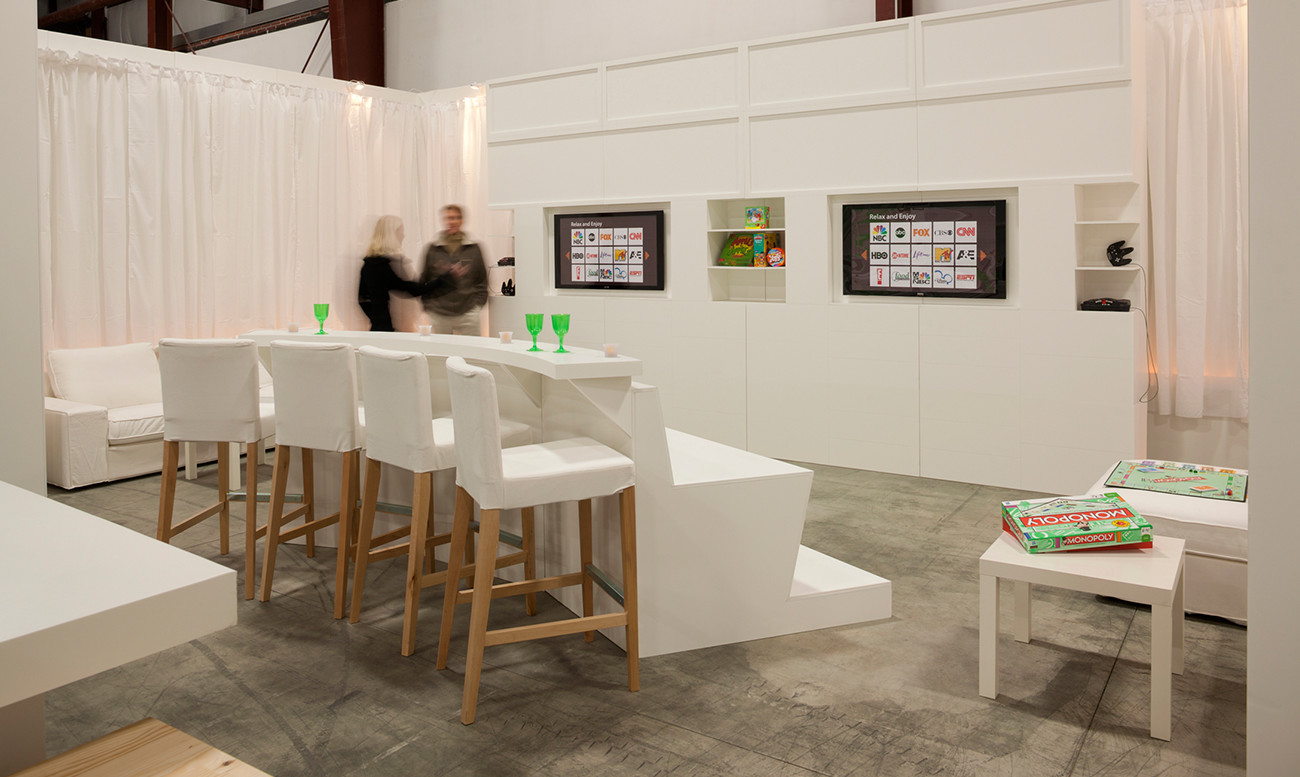Challenge
Holiday Inn:
The Social Hub

PROJECT
CLIENT
SERVICE
- CX+
INDUSTRY
- Retail
Holiday Inn partnered with Continuum to envision a new spatial experience for the brand.
Holiday Inn wanted to create accessible, modernized communal areas that would differentiate their hotels from the competition.
Since its start as an American motel chain in 1952, Holiday Inn has grown into one of the largest and most recognized hotel franchises in the world, with 1,226 hotels worldwide, providing accommodations for over 100 million business travelers, small groups, and families each year. But in today’s fast-paced, tech-enhanced marketplace, where customers can reserve a hotel room or Airbnb with the tap of a finger on a smartphone, brand loyalty is no longer a compelling enough factor in decision-making. In a 2014 study, 80% of Millennials indicated that they do not consider themselves “loyal” to a specific hotel or hotel brand. And yet, 46% of Millennials are willing to travel for business—a lot of potential customers, with no shortage of choices. Experience matters. A strong brand is one that understands its customers and engages with them in meaningful ways.
Holiday Inn guests were taking their business elsewhere. The chain attributed this decline to a key strategic area: its communal spaces. They wanted to combine their main lobbies and bars/restaurants to create accessible, modernized areas that would differentiate their hotels from the competition.
Alongside architectural partner Ai3, we worked to modernize Holiday Inn’s spatial experience, and re-connect people to their spaces and brand.
Awards
-
Spark International Design Awards
Solution
The Social Hub is one cohesive space that gives guests flexible options, so they can eat, connect, or just have fun without leaving the hotel. Its welcoming look and feel reminds guests of home, so they can let their guard down and be themselves. It connects guests within the space—to the space, to each other, and even virtually.
Although appearing seamless, the design is modular, allowing hotel owners to customize based on their floor plan and unique mix of guests while retaining a core Holiday Inn experience. Based on its adaptability and the design flow of its components, the Hub requires zero additional spending on staff to implement and run.
Lighting, materials, and merchandising help the Social Hub feel vibrant both day and night, eliminating the post-breakfast slowdown. Sliding panels conceal the bar during breakfast, but slide up at night, to reveal a chef’s station and a full bar. The panel doubles as a large-screen TV, which draws people into the space.
The 24/7 Food Market and To-Go Café offer guests a quick and easy breakfast to start the day. The Social Hub also features a variety of ways to relax and have fun, with TV, gaming consoles, free Wi-Fi, and plenty of outdoor space to relax.
Results
By offering a new guest experience, the Hub differentiates Holiday Inn from its competitors. As of 2011, the Hub’s pilot location in Duluth, Georgia, had experienced a 20% increase in food revenue over the previous year, a 50% increase in beverage revenue, and a 24/7 market increase of 75%. The appeal of the Hub encourages customers to enjoy their meals and drinks at the hotel, rather than venturing elsewhere.
Designed and built within a year, the successful pilot led to an aggressive international rollout, beginning in 2012. The Holiday Inn relaunch was a $1 billion effort–one of the largest hotel relaunches ever in the industry.


